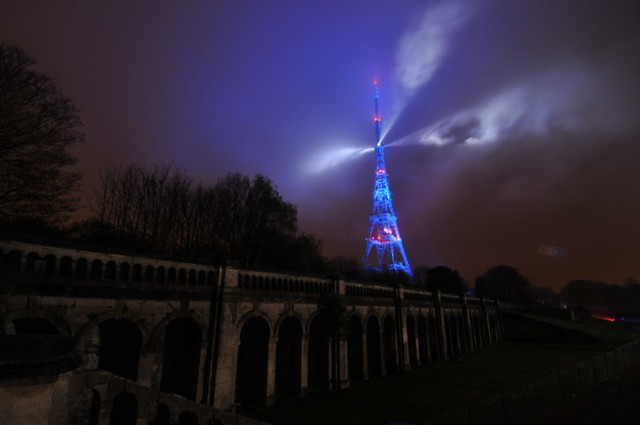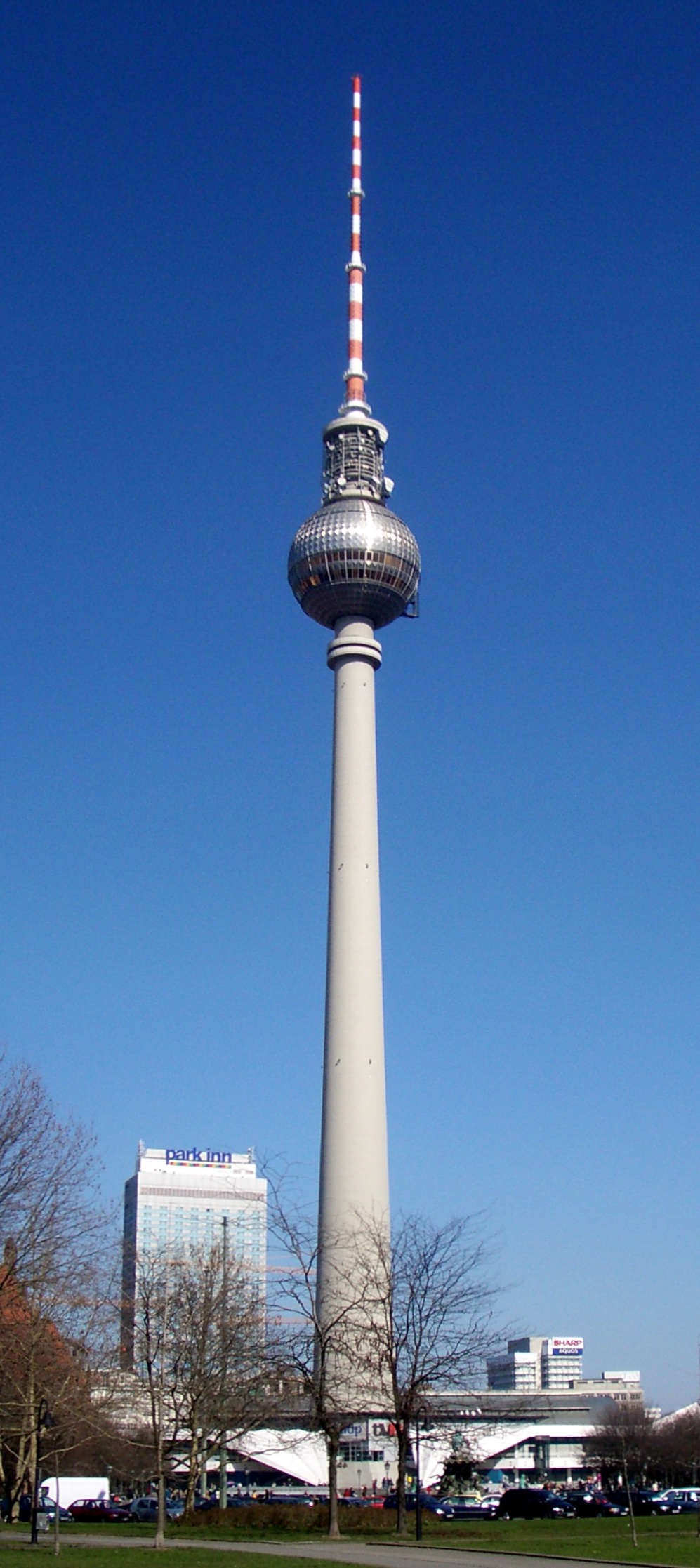Well how about this then? Apparently it was the BT Tower's birthday yesterday as well, but let's look a little bit beyond the nostalgia for a second, I think there's something worth considering here.
A Series of Transmissions
Have you ever seen how much the BT Tower looks like an echo of the water towers from the Crystal Palace? Designed by Brunel, and showing him up to be somewhat lacking in architectural skill, they carried the water for the ruinously expensive fountains that Paxton created for the park. Apart from that the towers had various other programmes incorporated; the art and engineering college from the Crystal Palace occupied some of the internal floors, while the south tower was the setting for some of John Logie Baird's initial television broadcasts - he maintained a transmission station and broadcasting suite there until the towers were demolished after the fire in 1936.
In 1936 a TV transmission station was set up by the BBC to broadcast from the Alexandra Palace in the north of London, another massive iron & glass palace built in the mid 19th century exhibition fever.
Which leads us to the original tower/restaurant hybrid, the Eiffel tower of 1889. In my book I discuss it thusly:
With that, I closed off a whole line of enquiry. My investigation blocked off the question of verticality and went on with the vast ground-covering exhibition palaces. But there's definitely something about transmission towers with restaurants on top; I may well come back to this typology.It might be stating the obvious, but the Eiffel Tower is the most significant material product of the world exhibitions that still exists. Despite being as temporary as any other exhibition structure, despite the vociferous opposition to its very construction in the first place, and despite the frequent collapse of other attempts to make permanent structures out of the exhibitions, it still stands proudly over Paris. Two specific things mark it out from any other 19th century exhibition structure; one, it is an almost sublimely useless piece of architecture – it barely encloses any space at all. [...] The other thing that marks it out is its verticality – rather than being an enclosure over a large area of ground, it is mostly open structure. We can perhaps suggest that this allowed it to seem important long into the twentieth century, with the rise of the skyscraper as the technological limit of building. In fact; it was the tallest ‘building’ in the world for almost forty years after its construction.










4 comments:
http://www.bucharestdailyphoto.com/2009/09/the-potato-of-the-revolution.html
m:D :
I thought for a second that you might be a spam bot but that's very interesting. I got the name 'doughnuts on spikes' from the architect Mark Hemel, one of the designers of the Canton Tower in Guangzhou; he was explaining how IBA's design was a revolution in TV Tower design.
It now has a revolving ferris wheel on top!
"You know, there's something alien about that tower, I can sense it."
http://youtu.be/fmS50k3PeQk
not to mention the Not The Nine O'Clock News take on the matter:
http://youtu.be/7vk5K-4PGYQ
Post a Comment